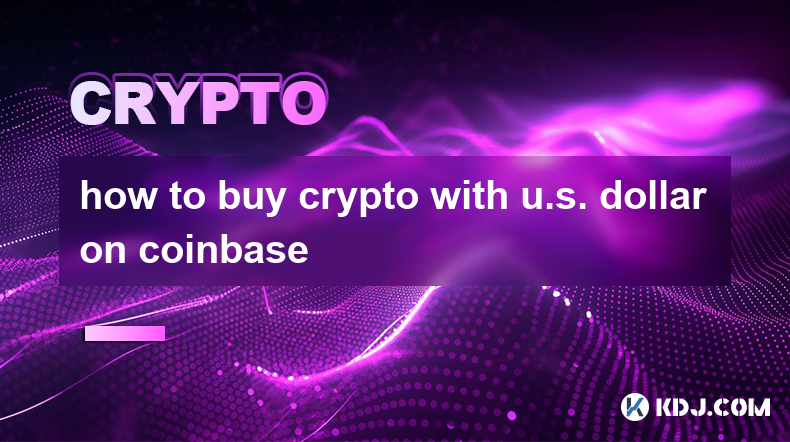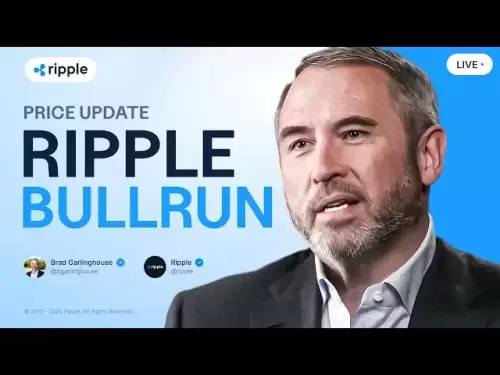-
 Bitcoin
Bitcoin $105,660.2309
1.97% -
 Ethereum
Ethereum $2,552.7306
6.93% -
 Tether USDt
Tether USDt $0.9997
-0.04% -
 XRP
XRP $2.3798
1.13% -
 BNB
BNB $650.3328
1.80% -
 Solana
Solana $168.8054
2.04% -
 USDC
USDC $0.9996
-0.01% -
 Dogecoin
Dogecoin $0.2251
2.44% -
 Cardano
Cardano $0.7419
1.85% -
 TRON
TRON $0.2671
1.61% -
 Sui
Sui $3.8365
1.98% -
 Chainlink
Chainlink $16.0850
6.13% -
 Avalanche
Avalanche $22.3524
1.99% -
 Stellar
Stellar $0.2865
1.54% -
 Hyperliquid
Hyperliquid $26.6074
2.66% -
 Shiba Inu
Shiba Inu $0.0...01463
1.94% -
 Hedera
Hedera $0.1953
2.94% -
 UNUS SED LEO
UNUS SED LEO $8.7047
0.59% -
 Bitcoin Cash
Bitcoin Cash $394.8262
0.57% -
 Toncoin
Toncoin $3.0384
-0.37% -
 Litecoin
Litecoin $98.1332
0.92% -
 Polkadot
Polkadot $4.6385
1.93% -
 Monero
Monero $347.1478
1.61% -
 Bitget Token
Bitget Token $5.1577
0.68% -
 Pepe
Pepe $0.0...01330
2.85% -
 Dai
Dai $0.9998
0.00% -
 Pi
Pi $0.7325
0.06% -
 Ethena USDe
Ethena USDe $1.0003
-0.01% -
 Aave
Aave $264.9425
21.69% -
 Uniswap
Uniswap $5.9747
3.73%
how to buy crypto with u.s. dollar on coinbase
Coinbase offers a user-friendly platform for purchasing cryptocurrencies with US dollars, charging fees for its services and providing multiple funding options for added convenience.
Jan 31, 2025 at 07:30 am

Key Points:
- Understand Coinbase's platform and fees
- Create a Coinbase account and undergo verification
- Link a US dollar funding source
- Place a purchase order and choose payment method
- Track and manage crypto purchases
Detailed Guide:
1. Understand Coinbase's Platform and Fees
Coinbase is a regulated and user-friendly cryptocurrency exchange that allows users to buy, sell, and store multiple cryptocurrencies. It offers two main platforms:
- Coinbase.com: The full-featured web platform with advanced trading tools and options.
- Coinbase App: The mobile app provides a simplified and accessible interface for basic cryptocurrency transactions.
Coinbase charges fees for its services, including:
- Trading Fees: Based on a percentage of the transaction amount, typically 0.5-1.5%.
- Funding Fees: Vary depending on the funding source and can range from free (e.g., bank transfer via ACH) to 3.99% (credit/debit card).
2. Create a Coinbase Account and Undergo Verification
To purchase crypto on Coinbase, you must first create an account:
- Visit Coinbase.com and click "Create an account."
- Provide your full name, email address, and create a strong password.
- Verify your email address and complete the identity verification process.
3. Link a US Dollar Funding Source
You can fund your Coinbase account from several sources:
- Bank Account (ACH Transfer): Free and typically processed within 1-3 business days.
- Debit/Credit Card: Instant processing but higher fees (typically 3.99%).
- PayPal: Fast but limited to specific countries and may involve fees.
4. Place a Purchase Order and Choose Payment Method
Once your funding source is linked, you can place a purchase order:
- Select the cryptocurrency you want to buy.
- Enter the desired amount in US dollars.
- Choose your preferred payment method from the linked sources.
5. Track and Manage Crypto Purchases
After executing the purchase, you can monitor it through your Coinbase account:
- Track the order status and estimated processing time.
- View your cryptocurrency balance and transaction history.
- Manage your portfolio and explore advanced trading options (on Coinbase.com).
FAQs:
Q: What cryptocurrencies can I buy with US dollars on Coinbase?
A: Coinbase supports a wide range of cryptocurrencies for purchase, including Bitcoin (BTC), Ethereum (ETH), Litecoin (LTC), and many more.
Q: Are there any limits on the amount of crypto I can buy on Coinbase?
A: Coinbase does impose limits based on your account verification level and payment method. Limits may vary depending on the cryptocurrency purchased.
Q: How long does it take to process a US dollar purchase on Coinbase?
A: Purchase orders typically take 1-3 business days to process for bank transfers via ACH. Debit/credit card purchases are processed instantly but may take additional time to reflect in your account.
Q: Can I withdraw my crypto from Coinbase to my personal wallet?
A: Yes, Coinbase allows withdrawals of your cryptocurrency to external wallets. However, fees may apply for withdrawals.
Q: What are the risks associated with buying crypto on Coinbase?
A: Cryptocurrency prices can fluctuate significantly, so you could experience gains or losses. Coinbase is generally secure, but it's important to implement good security practices (e.g., two-factor authentication, hardware wallet storage) to protect your assets.
Disclaimer:info@kdj.com
The information provided is not trading advice. kdj.com does not assume any responsibility for any investments made based on the information provided in this article. Cryptocurrencies are highly volatile and it is highly recommended that you invest with caution after thorough research!
If you believe that the content used on this website infringes your copyright, please contact us immediately (info@kdj.com) and we will delete it promptly.
- Bitcoin Mayer Multiple Z-Score Is Still Under Its Mean
- 2025-05-20 12:35:13
- GENIUS Act Enters Formal Review Stage After U.S. Senate Passes Procedural Motion
- 2025-05-20 12:35:13
- Bitcoin price today on May 20, 2025 is trading at USD 1,05,163.45 at 3:11 AM IST.
- 2025-05-20 12:30:12
- BlackRock's spot Bitcoin ETF achieved nearly $3 billion in trading volume on a single day
- 2025-05-20 12:30:12
- URSWAP: The All-in-One DeFi Toolkit
- 2025-05-20 12:25:12
- The XRP price remains in a consolidation phase despite the latest launch of CME XRP futures
- 2025-05-20 12:25:12
Related knowledge

What is Ethereum’s Slashing mechanism and how to punish malicious behavior?
Feb 20,2025 at 03:08am
Key PointsOverview of slashingDifferent types of slashing in EthereumIncentives and consequences of slashingIdentifying and reporting slashed validatorsOngoing discussions and potential improvementsEthereum's Slashing Mechanism: Punishing Malicious BehaviorEthereum's slashing mechanism is an essential tool for ensuring network security and punishing mal...

What is the verifier node of Ethereum and how to become a verifier?
Feb 19,2025 at 06:00pm
The Verifier Node of Ethereum: A Comprehensive GuideKey Points:What is a Verifier Node?How to Become a Verifier NodeResponsibilities and Rewards of a Verifier NodeMinimum Requirements for Becoming a Verifier NodePotential Difficulties in Running a Verifier Node1. What is a Verifier Node?A Verifier Node is an independent entity on the Ethereum network th...

What is Ethereum’s staking, and how to participate and earn money?
Feb 19,2025 at 04:37pm
Key Points:Understanding Ethereum's Staking MechanismSteps to Participate in StakingBenefits and Rewards of StakingSecurity and Risk ConsiderationsTechnical Requirements and Hardware OptionsPotential Challenges and Troubleshooting TipsFAQs on Ethereum StakingWhat is Ethereum's Staking?Proof-of-Stake (PoS) is a consensus mechanism used in blockchain netw...

What is Ethereum’s DAO (Decentralized Autonomous Organization) and how does it work?
Feb 20,2025 at 03:12am
Key PointsDefinition and Structure of a DAOGovernance and Decision-Making in DAOsBenefits and Use Cases of DAOsChallenges and Limitations of DAOsWhat is Ethereum's DAO (Decentralized Autonomous Organization) and How Does It Work?Definition and Structure of a DAOA Decentralized Autonomous Organization (DAO) is an innovative governance and management fram...

What is Ethereum's multi-signature wallet and how to improve security?
Feb 20,2025 at 02:18pm
Key Points:Understanding the Concept of a Multi-Signature WalletBenefits and Drawbacks of Multisig WalletsRequirements for Setting Up a Multisig WalletStep-by-Step Guide to Generating a Multisig WalletImplementing Strategies for Enhanced Security1. Understanding the Concept of a Multi-Signature WalletA multi-signature (multisig) wallet in the Ethereum e...

What is Ethereum's oracle and how to provide data for smart contracts?
Feb 21,2025 at 01:30am
Key Points:Understanding the concept of oracles in EthereumExploring different types of oraclesDetailed guide on how to provide data for smart contractsAddressing potential challenges and considerationsWhat is Ethereum's Oracle?Oracles are crucial components in the Ethereum ecosystem, enabling smart contracts to access real-world data and off-chain even...

What is Ethereum’s Slashing mechanism and how to punish malicious behavior?
Feb 20,2025 at 03:08am
Key PointsOverview of slashingDifferent types of slashing in EthereumIncentives and consequences of slashingIdentifying and reporting slashed validatorsOngoing discussions and potential improvementsEthereum's Slashing Mechanism: Punishing Malicious BehaviorEthereum's slashing mechanism is an essential tool for ensuring network security and punishing mal...

What is the verifier node of Ethereum and how to become a verifier?
Feb 19,2025 at 06:00pm
The Verifier Node of Ethereum: A Comprehensive GuideKey Points:What is a Verifier Node?How to Become a Verifier NodeResponsibilities and Rewards of a Verifier NodeMinimum Requirements for Becoming a Verifier NodePotential Difficulties in Running a Verifier Node1. What is a Verifier Node?A Verifier Node is an independent entity on the Ethereum network th...

What is Ethereum’s staking, and how to participate and earn money?
Feb 19,2025 at 04:37pm
Key Points:Understanding Ethereum's Staking MechanismSteps to Participate in StakingBenefits and Rewards of StakingSecurity and Risk ConsiderationsTechnical Requirements and Hardware OptionsPotential Challenges and Troubleshooting TipsFAQs on Ethereum StakingWhat is Ethereum's Staking?Proof-of-Stake (PoS) is a consensus mechanism used in blockchain netw...

What is Ethereum’s DAO (Decentralized Autonomous Organization) and how does it work?
Feb 20,2025 at 03:12am
Key PointsDefinition and Structure of a DAOGovernance and Decision-Making in DAOsBenefits and Use Cases of DAOsChallenges and Limitations of DAOsWhat is Ethereum's DAO (Decentralized Autonomous Organization) and How Does It Work?Definition and Structure of a DAOA Decentralized Autonomous Organization (DAO) is an innovative governance and management fram...

What is Ethereum's multi-signature wallet and how to improve security?
Feb 20,2025 at 02:18pm
Key Points:Understanding the Concept of a Multi-Signature WalletBenefits and Drawbacks of Multisig WalletsRequirements for Setting Up a Multisig WalletStep-by-Step Guide to Generating a Multisig WalletImplementing Strategies for Enhanced Security1. Understanding the Concept of a Multi-Signature WalletA multi-signature (multisig) wallet in the Ethereum e...

What is Ethereum's oracle and how to provide data for smart contracts?
Feb 21,2025 at 01:30am
Key Points:Understanding the concept of oracles in EthereumExploring different types of oraclesDetailed guide on how to provide data for smart contractsAddressing potential challenges and considerationsWhat is Ethereum's Oracle?Oracles are crucial components in the Ethereum ecosystem, enabling smart contracts to access real-world data and off-chain even...
See all articles
























































































